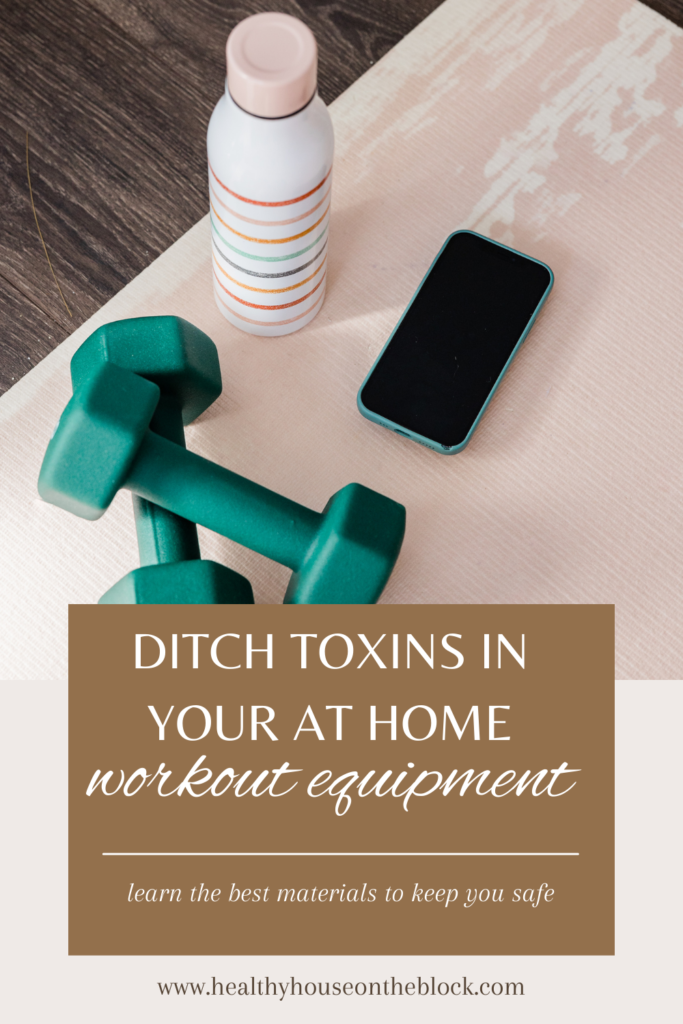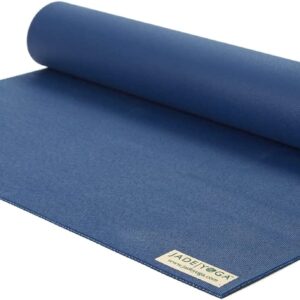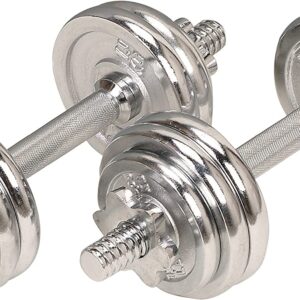
Ever since I was little, being active has been an important part of my life. And while organic workout gear or workout equipment for the home didn’t exist when I was growing up, my understanding of healthy exercise didn’t exist either. I started out wanting to work my body as hard as I could – no pain no gain.
But over time I’ve learned that exercise is so much more than just how it helps your physical body. And I’ve focused more on how my body can really benefit from increasing my muscle and flexibility more. No more punishing my body. Nope, just in awe of how it can change and transform.
And as I’ve had these realizations about how exercise really benefits my whole being, I’ve also started to consider that while my body is detoxing from sweat, I should probably be surrounding it with low toxin and non toxic workout equipment at home.
I’m no gym rat, and I walk down my stairs at 5:30 a.m. every weekday to sweat while the rest of my family sleeps. In the summers I love to get outside at first light and run freely to clear my head. But having a space at home means I can control the products and materials that I bring in, so let’s talk about that today.

TOXINS & EXPOSURE DURING EXERCISE
One of the natural ways that the body detoxifies is by sweating out toxins. Some people do this through exercise, some people do this through saunas. Some do a little bit of both. But either way, it’s an effective and safe means of detoxification in the body.
So while your body is getting rid of a variety of toxins (heavy metals, bisphenols), it would make sense that you’d want your space to be as free from toxins as possible. While you’re exercising, you’re most likely breathing more deeply, which means your exposure to toxins and chemicals can be increased during that time.
You’re also likely warm when you’re exercising, which means any toxin on your body or toxin in the flooring you’re laying on could also be off gassing at a higher rate due to the increased temperature.
And finally, you’re putting out a lot of moisture during exercise, which can increase the relative humidity, especially if you’re exercising in a room with a closed door. This again, will increase the rate at which VOCs are off gassing.

WORKOUT EQUIPMENT FOR HOME THAT MATTER MOST
Flooring and floor pads are often made from a foam that contains ethylene vinyl acetate (EVA). This type of material off gasses a chemical byproduct called formamide, which the European Union has flagged as a substance of high concern. It has also been linked to reproductive harm. Be cautious of flooring or pads that are made from recycled products as these can contain even more potentially harmful chemicals such as phthalates and VOCs.
Yoga Mats are notorious for containing PVC and phthalates alike. We know these toxins contribute to disruption of the endocrine system and are also a huge source of body burden. PVC toxins have been labeled a forever chemical recently, meaning they are sticking around in BIG ways inside our body and in our environment, causing multiple exposures to the toxin. Even if a yoga mat is labeled as “recycled materials” or “rubber”, it can still contain numerous toxins mixed in.
Foam Rollers are often made of conventional foams that contain petrochemicals because they are made from petroleum products. Many foam rollers also contain various plasticizers that contain polyvinyl chloride toxins and phthalates. Both of these toxins are harmful to the natural production of hormones in our body and contribute to a number of negative health issues such as increased risk for developmental delays, increased risk of developing asthma and allergies as well as reproductive harm.
Weights & Kettlebells have an outer layer that is often wrapped in a type of plastic that contains PVC toxins. This type of plastic also contains phthalates, which are hormone disrupting toxins. The trickle down effects from this disruption of normal hormone production includes reduced fertility, developmental disorders, and an increased risk of some cancers. They’ve also recently discovered that phthalates are a new concern to brain development.
Exercise Balls are often made with PVC toxins, phthalates, bisphenols and more plasticizers in order to get the soft and pliable material needed to create an exercise ball. There is a new type of ball that is made of thermoplastic rubber (TPR), however there isn’t enough research that has been done on this type of material to know if it is truly safe for the body.

ORGANIC ACTIVEWEAR
If there’s nothing else that you can change at home, make it a goal to get some toxin free, organic workout clothing. Recently, a national news story made headlines showing that a variety of toxins have been found in exercise clothing:
- Triclosan in antimicrobial clothing has been linked to liver disease
- PFAS have been linked to birth defects, cancer, lower vaccine effectiveness and more
- PFCs in water repellent clothing have been low birth rate and cancer
- Bisphenols has been shown to disrupt hormone production
You know that I’m always going to give you a BEST, least toxic option, but I’m also going to give you an option that is better than conventional clothing that contains the toxins above in large amounts.
The better option for clothing would be finding activewear that is mostly cotton without synthetic materials in it. Other natural materials you could look for would be bamboo, hemp, linen or wool.
The next best option would be to find a material that carries the Oeko-TEX Standard 100 certification.
And the BEST option? Go for a GOTS certified organic product. The GOTS certification requires that the organic fibers don’t contain any sort of pesticides or other toxins or toxin residues.
My favorite option for GOTS certified organic activewear is Pact Apparel.
HEALTHY HOME PRACTICES DURING AT HOME WORKOUTS
And as always, I will tell you that the habits we have in our homes make a HUGE impact as well as the products we bring in. Exercising at home is no different and there are some really easy ways you can reduce toxins while you’re doing it.
Sweat Outside: If at all possible, sweat outdoors. I get it though, I live in Minnesota, that’s not always an option. In the winter months when it’s frigidly cold and dark until 8:00 a.m., can only really exercise indoors. But as soon as it gets nice out, I sweat outside to get fresh air and keep my indoor humidity levels low.
Open a Window: The next best thing to being outside is to open a window while you’re inside. This can help not only give you fresh air while you’re exercising at home, but it can also help reduce the temperature indoors as well as reduce the humidity levels indoors.
Leave the Door Open: If you can leave the door open while you’re exercising, you’ll ensure that the room you’re working out in won’t get too hot and it won’t get too humid. These are both contributors to a high production of VOCs in your home, and by reducing these two things you can keep your space healthy.
Use an Air Purifier: When you’re exercising you’re breathing deeply and taking in more of the air from your space into your lungs. By using an air purifier, you’ll keep as many toxins out of your air as possible, meaning you’re breathing in the most high quality air you can during exercise.
Wipe Down Surfaces: Bacteria can grow on home exercise equipment after they’ve been touched with sweaty hands. Make sure to use a toxin free spray, such as AspenClean to ensure you’re not adding toxins to your room or your exercise space at home.

LOW TOXIN WORKOUT EQUIPMENT FOR HOME





















Pingback: Year End Healthy House Review: Looking Ahead to 2024 -